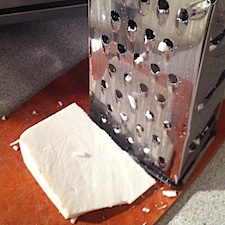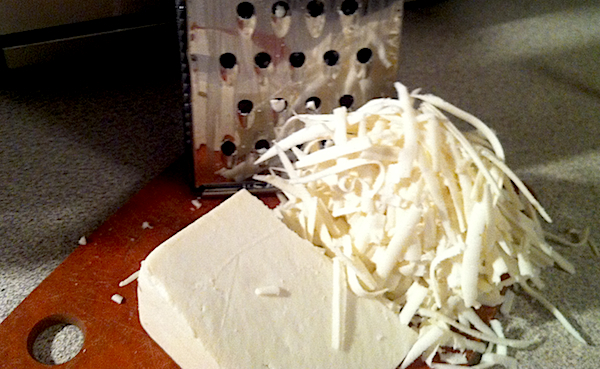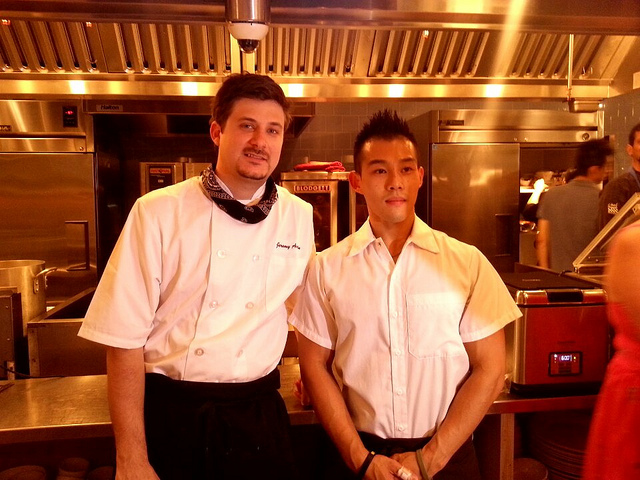When I was in New York in the spring I had dishes that featured ricotta salata at Momofuko Noodle Bar, Battersby, Marea and Eleven Madison Park (I ate well that trip – I don’t recall ricotta salata at The John Dory, but there may well have been). I decided this was enough to constitute a trend, and sure enough I’ve seen it pop-up lately on menus here in Toronto, as well as in some forward restaurants on a recent trip to Dublin. On top of it all, I spend a few hours every month pouring over the online menus of restaurants across Canada for the column I write for Chatelaine and have sighted RS on pdf’s downloaded from St. John’s Harbour to English Bay. 2012 must surely be the year of this firm, white, salty cheese.
I wanted to find out more about this ingredient I hadn’t previously noticed. My go to quick Italian food reference is Anna del Conte’s Concise Gastronomy of Italy (1st ed., 2001). She’s particularly concise on the cheese, giving it two sentences at the end of a long paragraphical entry on fresh ricotta:
Another type of ricotta is ricotta salata. This is hung to drain until dry, to be used, grated, over pasta al pomodoro (with tomato sauce) and it is an essential ingredient in a variety of Sicilian pasta dishes.
Scour the internet and you might find lots of recipes featuring ricotta salata (Mario Batali appears, unsurprisingly, to have been ahead of the curve on this trend), but not a lot on the provenance of the cheese (I found references to Basilicata as well as Sicily, so I’m going for a general description of origin: Southern Italy).
Suffice it to say that ricotta salata is a ricotta cheese, ‘re-cooked’ from the whey that was left over from making another, usually sheep’s milk, cheese which is salted, pressed and aged just long enough for it to set into a firm but moist consistency. A good ricotta salata will have a bit of acidic sharpness, lots of saltiness and springy, spongy mouthfeel.
As fancy cheeses go, it’s not too expensive, which is nice (and may help explain its popularity with restaurateurs), and it’s proven lately to be a big part of this season’s cooking in our kitchen at home. Ricotta salata is very amenable to being grated or crumbled, or diced like feta. And works extremely well with late summer produce like tomatoes in salad or quickly cooked into a vibrant red sauce. I am particularly fond of it on simply grilled lengths of zucchini. I’d urge anyone to look for it at their cheese mongers and experiment.
 Malcolm Jolley is a founding editor of Good Food Revolution and Executive Director of Good Food Media, the not-for-profit corporation which publishes it. Follow him at twitter.com/malcolmjolley
Malcolm Jolley is a founding editor of Good Food Revolution and Executive Director of Good Food Media, the not-for-profit corporation which publishes it. Follow him at twitter.com/malcolmjolley









I suspect it will take well to poaching, much like feta, thereby making it creamier and less salty.
Good Lord, yes. Yes, indeed.
I totally agree with you about whole wheat penne. I have a hard time using it in a lot of recpeis because it just eats up flavor and kind of tastes like cardboard. But there’s nothing a bunch of caramelized onions and some cheese can’t fix! Thanks for passing this along.